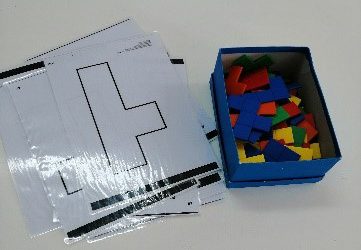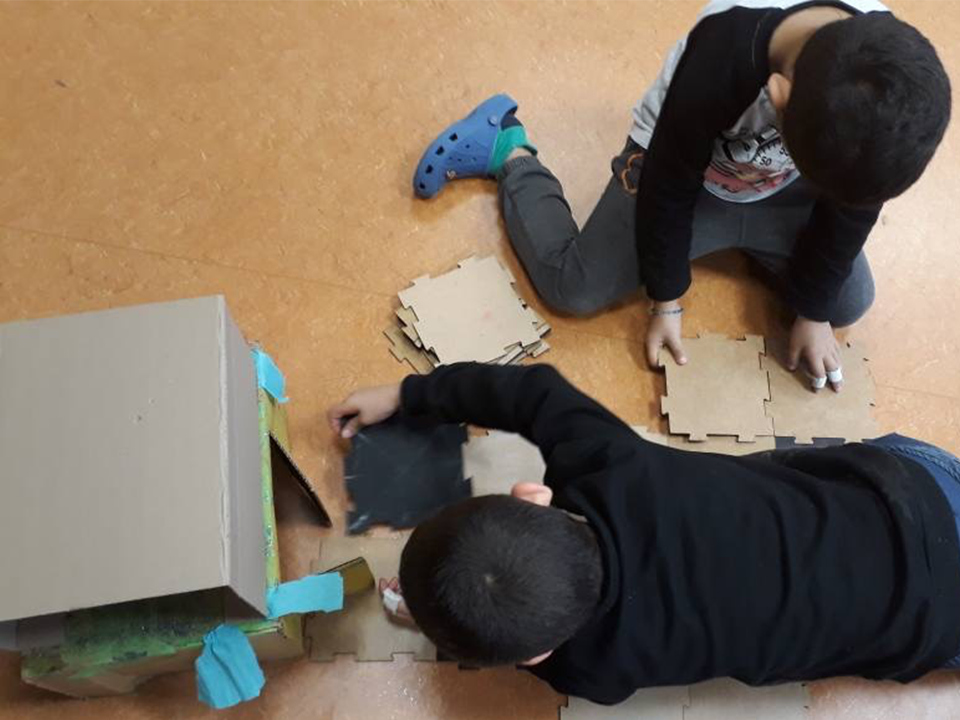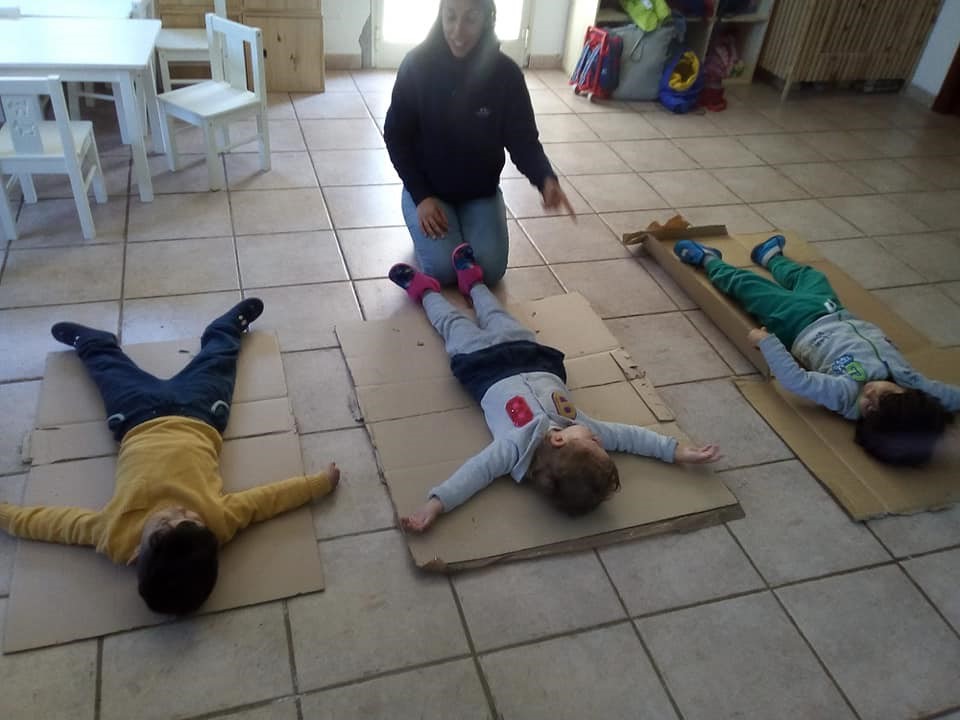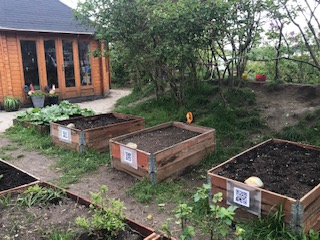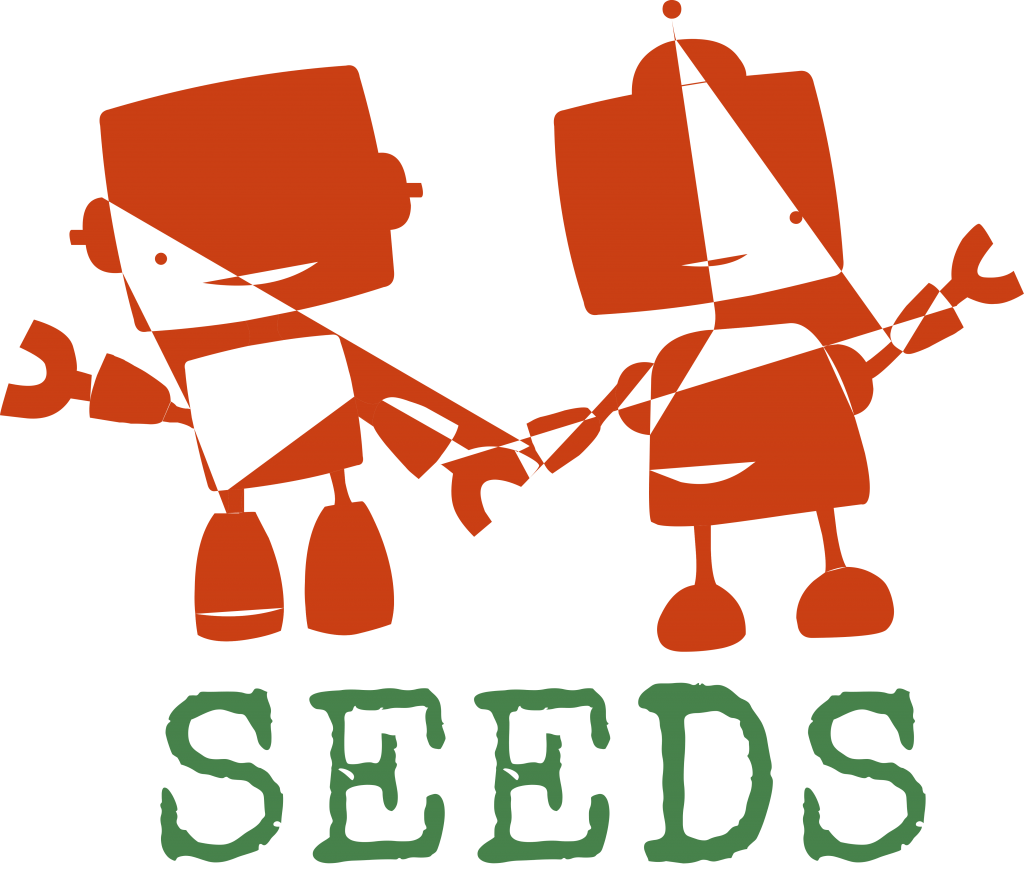


The SEEDS Pedagogy
- Using the change-maker process and experimenting communities in preschools
The main goal of the SEEDS project was to develop pedagogical methods for preschool education, to support early learning of relevant skills like an entrepreneurial mind-set, digital media use and to ensure social inclusion of all children in this learning.
SEEDS aims to equip children from an early age, with the seeds for the development of an entrepreneurial compass in interplay with digital media. This compass starts from the individual as a citizen and builds on their particular skills and competences to enhance the four points of the compass; critical reflection, collaboration, co-creation and agency.
SEEDS has developed a preschool pedagogy, described through a collection of ressource materials that contain the SEEDS pedagogy (which can be found on this page), educational guidelines and principles, methods and themes, best practice and a concrete toolkit with digital media ressources. The resource materials were developed based on activities across local experimenting communities in the 4 partner countries; Germany, Italy, Cyprus and Denmark.
A pdf version of the SEEDS Pedagogy description can be downloaded in English, Danish, Greek, German and Italian.
Introduction
The pedagogy illustrated in the table below was developed from the findings of the SEEDS project. It combines the Change-maker model (Robinson, 2020) and the methodology of an Experimenting Community (Thestrup, 2020) into an innovative pedagogy which can be applied in almost any educational activity from kindergarten to higher education. The SEEDS pedagogy supports and nurtures the development of entrepreneurial competencies that include strengthening creativity, collaboration, critical thinking and action orientated intentions.
It is important to note that the SEEDS pedagogy as described below is not finite and does not end with the common experiment but will continue developing further according to the ecology of the educational situation i.e. the physical context, the participants, the resources and the digital technologies available. The learning group, which includes the teacher (she will learn as much as the young people she is with), will together decide how to develop their own learning process based on the value they want to create, for themselves and for others.
Using the findings from the SEEDS project, the table below illustrates phases that move from left to right and describe how experimenting communities can be developed. These phases are i) copying intention ii) discovering potential iii) seeking transformation and iv) establishing a common experiment. Each phase is driven by a central question which changes focus as the community develops. The role of the teacher changes at each phase, as does her relation to the children.
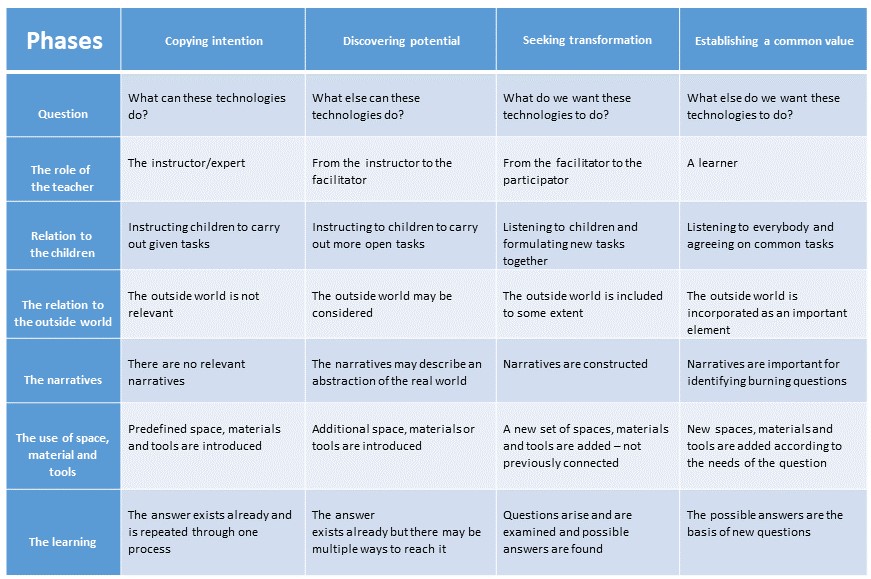
In brief, it might be said that the SEEDS pedagogy may begin as a closed process where the answers are known, the context and the materials are given and learning is about copying or repeating. As learners develop knowledge and experience, the phases become more open and include new resources, bring in the outside world, use narratives, and change the use of space and resources.
The phases described here help to support the establishment of an experimenting community. When established, experimenting communities will be able to draw on their own expertise from within or have the ability to reach out to others, as they find questions they want to answer together. The SEEDS pedagogy uses questions as a central element to explore and investigate possible solutions. This way of working with problems and solving them is an essential competence for the future.
Phase 1: Copying Intention
The first phase of the SEEDS pedagogy begins with perhaps a very traditional way of thinking about teaching and learning. One does not need to start here but for many teachers this is a traditional way of thinking about learning.
The question is closed. The teacher is the one who decides what is to be learned and how it is to be learned. The teacher is the expert and takes responsibility for deciding how the learners will approach the learning and what the intended result of their learning will be beforehand. This is why this phase is called copying intention.
We have a group of learners. There is something to be understood, some knowledge or experience to be ‘learned’ e.g. programming in the kindergarten and the teachers knows how to do that to include everyone. For example, the teacher gives a group of children one beebot and explains about the buttons and what they are for. The teacher asks one child from the group to make the beebot move across the floor to another child. The child presses the buttons. The child finds out which button makes the beebot move forward and what the other buttons can do. The child finds out that ‘programming’ is not difficult.
Phase 2: Discovering Potential
The next phase may also be recognizable to many teachers. The intention is to allow for new experiences and to embed learning. For example, the teacher introduces tiles (these correspond to the distance when the button is pressed once) and asks the children to get the beebot to follow move over the tiles. The children lay out the tiles and then work out how to make the beebot move from one end to the other.
This may involve calculating turning and moving forward multiple times. The introduction of tiles, or another material, can help challenge skills and develop the critical thinking of the child. Here the teacher becomes a facilitator, allowing the children to design their own formation of the tiles.
The outside world, relating to real bees for example may be drawn in by talking about the bee flying from one place to a flower to collect nectar. Drawing a flower on the tile and a honeycomb on another will be part of the exercise. It is interesting that in this phase the children will naturally look at what others (groups) are doing and will get ideas or copy them. The notion of copying in this scenario is encouraged as copying means that there will be, by default, some kind of transformation and difference.
Phase 3: Seeking Transformation
In the next phase the teacher may ask questions that she does not have the answer to – or use questions that come from the children, to which she again does not have the answer.
In one example from the SEEDS project, children asked if they could teach the beebot to dance. And in another the children asked what the object on the back of the beebot was for. When they were told that it could be used to hold a pen the children asked for paper. In this phase, it is the children who came up with ideas and asked questions. The teacher, moving from facilitator to participator became part of the group and the results of the activity changed it and transformed the learning to include other knowledge. Here the openness to the outside world and to narratives may be of significant importance.
Phase 4: Establishing a common value
In the phase following phase the process becomes much more open. The group discuss what they would like to do. One child wanted the beebot to fly, another wanted to put it with an ozobot and see if they could become friends.
The group will decide quite quickly what is important and meaningful for them. Here we note the motivation of the children and the concentration and engagement they exhibit when they have ownership of their learning process.
The teacher’s role is, not only to support learning, but also to make sure that there is critical reflection and their competencies become visible. The process does not end here. As the group finds out what is important to them, what is meaningful and of value they will find the path they want to take. This journey is dependent on the group of learners and the ecology they find themselves in.
Research articles about the SEEDS Pedagogy
Nadine Dittert, Sarah Robinson, Klaus Thestrup, and Jacob Knudsen, 2019.
Supporting creativity and collaboration: Considerations for the development of a technologically enhanced toolkit for kindergartens.
In Proceedings of the FabLearn Europe 2019 Conference (FabLearn Europe ’19).
Association for Computing Machinery, New York, NY, USA, Article 9, 1–3.
DOI: https://doi.org/10.1145/3335055.3335064
Nadine Dittert, Klaus Thestrup, Sarah Robinson, 2021.
The SEEDS pedagogy: Designing a new pedagogy for preschools using a technology-based toolkit,
International Journal of Child-Computer Interaction, Volume 27, 2021, 100210, ISSN 2212-8689.
DOI: https://doi.org/10.1016/j.ijcci.2020.100210
